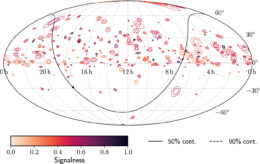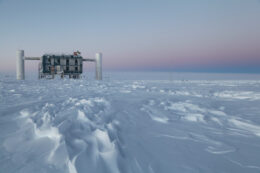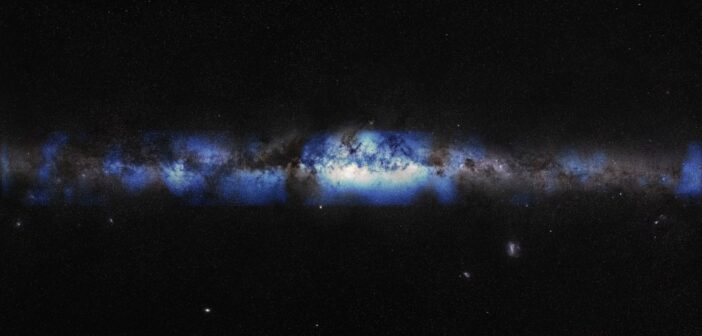We live in a universe teeming with neutrinos, tiny particles that zip around near the speed of light and pass right through most solid objects. Where are they all coming from, and what could be responsible for so many bizarre little bits of matter? Astronomers still aren’t sure, but researchers at the IceCube Neutrino Observatory are beginning to sketch out an answer.
Lawless Speeders
Since 2013, astronomers have known that Earth, its telescopes, and all of its inhabitants are constantly weathering a continuous but nearly undetectable barrage of speeding neutrinos. What they are still less sure about, however, are where all of these ultralight and intrusive particles are coming from. Five years ago they discovered and interrogated a possible suspect, a faraway active galactic nucleus with the catchy name TXS 0506+056; however, although they found that this temperamental blazar was indeed responsible for at least some of the high-energy neutrinos zipping through our solar system, it was a small-time player that couldn’t account for the vast majority caught darting through.

The on-sky location and uncertainty of each of the detected high-energy neutrino events. [R. Abbasi et al. 2023]
In reality, measuring these tracks is much easier said than done. While IceCube has detected a few dozen bright streaks since construction finished in 2010, it hasn’t been able to measure any of their orientations accurately enough to guide other telescopes confidently to their sources. Luckily, however, IceCube detects more than just the highest-energy neutrinos, so astronomers have other evidence to consider. It also records millions of smaller, tamer events; with some careful filtering to ignore the neutrinos that are created within the atmosphere by local processes, astronomers can extract a much larger catalog of astrophysical neutrinos, each of which is tagged with a rough estimate of its source location.
Coincidence or Coincident?
The IceCube Collaboration, a vast network of hundreds of scientists, recently dove into these lower-energy events to answer an interesting question: did any of these neutrinos come from the same direction as their brighter counterparts? If they did, that might suggest that whatever is creating all of these racing particles does so at a steady rate, even if it only sends out the heavy-hitters on rarer occasions. Alternatively, if every neutrino came from its own random direction, that would imply that most are created during short outbursts from otherwise quiet sources.

The IceCube Neutrino Observatory, located at the geographic South Pole [Sven Lidstrom, IceCube/NSF]
Though astronomers still haven’t pinned down the object or process responsible for the background flux of neutrinos, they are making progress building the profile of what they must be like. As studies like this accumulate and the picture improves, eventually the community will settle on an explanation. For, now though, the neutrinos will keep coming, and IceCube will keep watching for flashes.
Citation
“Constraints on Populations of Neutrino Sources from Searches in the Directions of IceCube Neutrino Alerts,” R. Abbasi et al 2023 ApJ 951 45. doi:10.3847/1538-4357/acd2ca

